How to use Weaveworks free tier for continuous delivery, monitoring and alerts for Kubernetes Engine
Steve George
COO, Weaveworks
Editor’s Note: Today we hear from our partner Weaveworks, which recently integrated its Weave Cloud container and microservices management tools with Google Kubernetes Engine. Read on to learn how Weave Cloud can make it easier to deploy and monitor your applications to Kubernetes Engine.
At Weaveworks, our goal is to help developers create and operate Kubernetes-based applications. Any developer can sign up for Weave Cloud, hook up their git repository and get continuous delivery, observability, metrics, dashboards and alerts immediately.
We recently launched a free tier of Weave Cloud for Google Cloud Platform (GCP) users. If you’re just getting started with Kubernetes, bringing together Google Cloud Platform’s free tier with Weave Cloud’s free tier creates a powerful development and operations stack that you can use to get started developing Kubernetes-based applications.
Weave Cloud brings Kubernetes’ powerful automation together with our continuous deployment service. Development and devops teams benefit from being able to continuously deploy, visually control and monitor all the services within the cluster: Continuous deployment increases development velocity. Automation means spending more time focused on development. Advanced observability helps with resolving issues quicker, therefore increasing reliability.
The first screenshot shows a deployment taking place with a dashboard that checks whether the new code has improved performance or whether it should be rolled back.
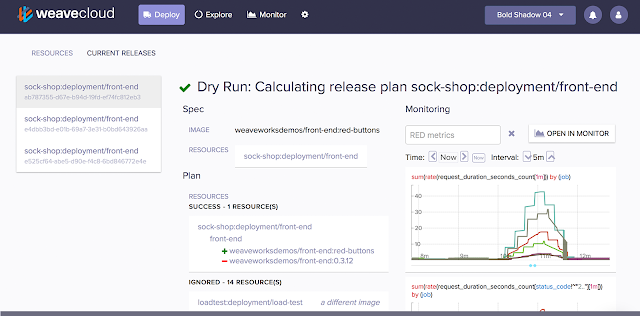

Weave Cloud also lets you observe and drill into the cluster and microservices running on it — great for both learning and troubleshooting applications. This screenshot shows Weave Cloud Explore, which shows an interactive map of the Kubernetes cluster and the applications running on it.
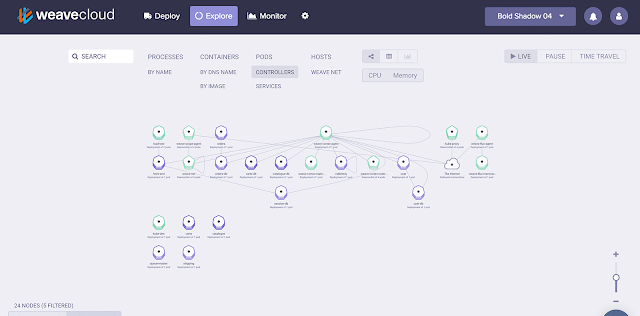

Getting started with Weave Cloud and Kubernetes Engine
Connecting Weave Cloud for continuous delivery, monitoring and alerts with Kubernetes Engine requires just a couple of simple steps.Subscribe to Weave Cloud — Weave Cloud is available from Cloud Launcher, a collection of preconfigured development stacks, solutions and services for GCP. Simply find Weave Cloud and subscribe to it.
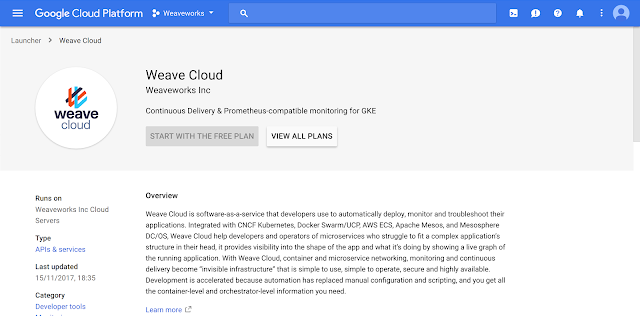

The Standard subscription provides you with one node's worth of free time each month.
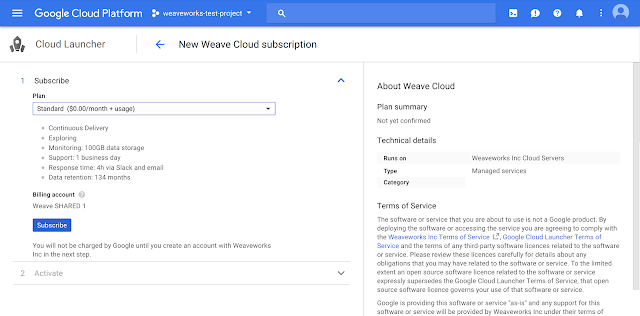

Set Weave Cloud permissions — After subscribing to Weave Cloud, you need to allow your Google Account to log in, giving it permissions to view your subscription data so that you can be billed via Google.
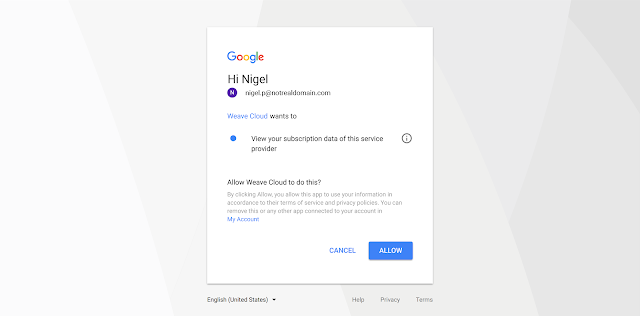

Add the Weave Cloud agent to the Kubernetes Engine cluster — Weave Cloud works through an agent running on your Kubernetes Engine cluster. (If you don’t already have a cluster, see the Kubernetes Engine Quickstart to create one.) Then copy the commands that include your unique service token and run them in your cluster.
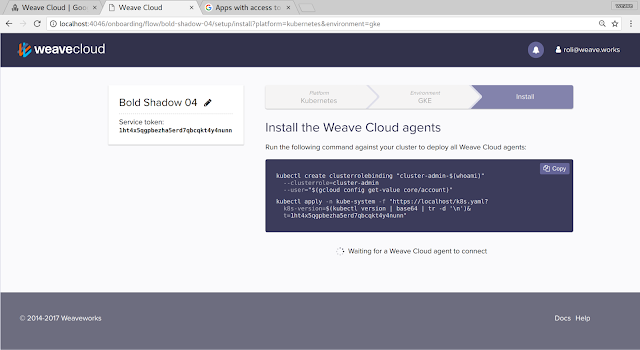

Congratulations! As soon as the agents are connected, you’ll see them on Weave Cloud, and you can start to use the Explore feature to observe your Kubernetes Engine cluster. You can also create a continuous deployment pipeline that takes code right from commit to deploying it into the cluster. (See the Weaveworks GCP page for the steps on how to do this.)
We hope you found this introduction easy, fast and useful! We’d love to hear from you and are always available to help. You can reach us either on Slack or Twitter.


